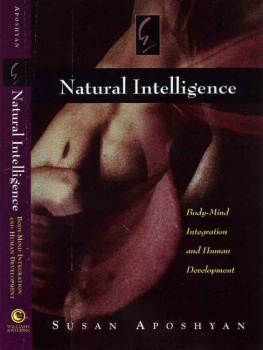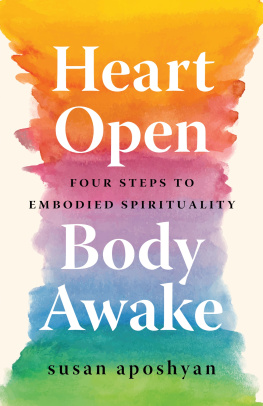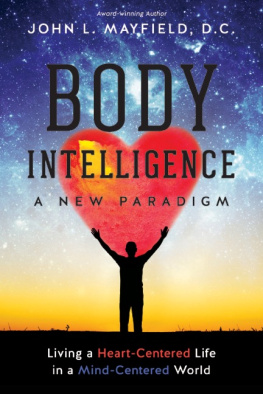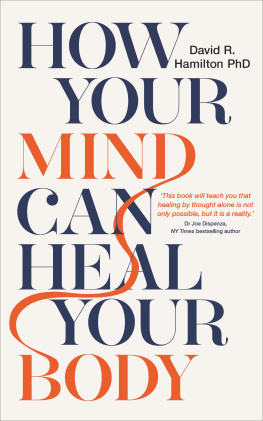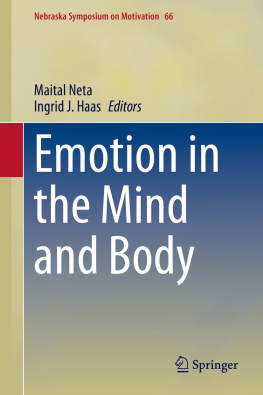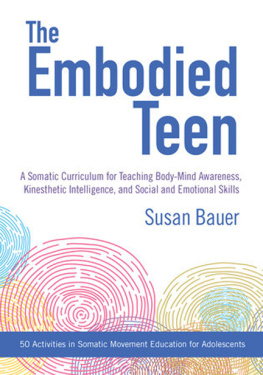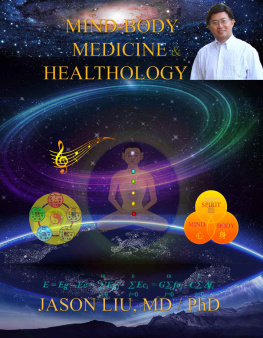


First Published in 1999 by Lippincott, Williams & Wilkins

Published by NOW Press 2007
546 Locust Place
Boulder, Colorado 80304
Copyright 1999 Susan Aposhyan
All rights reserved. This book is protected by copyright. No part of this book may be reproduced in any form or by any means, including photocopying, or utilized by any information storage and retrieval systems without written permission from the copyright owner.
The publisher is not responsible (as a matter of product liability, negligence or otherwise) for any injury resulting from any material contained herein. This publication contains information relating to general principles of medical care which should not be construed as specific instructions for individual patients. Manufacturers product information and package inserts should be reviewed for current information, including contraindications, dosages and precautions.
Printed in the United States of America
Library of Congress Cataloging-in-Publication Data
Aposhyan, Susan M.
Natural Intelligence: body-mind interaction and human development / Susan M.
Aposhyan
p. cm.
Includes bibliographical references and index.
ISBN 0-9792260-0-7
1. Mind and body. 1. Title
BF161.A66 1998
150.198-dc21
98-26722
CIP
The publishers have made every effort to trace the copyright holders for borrowed material. If they have inadvertantly overlooked any, they will be pleased to make the necessary arrangements at the first opportunity.
To purchase hard copies of this book, visit bodymindpsychotherapy.com
99 00 01 02
1 2 3 4 5 6 7 8 9 10
Acknowledgments
I am very blessed to have had two extraordinary teachers in my life, Chogyam Trungpa, Rinpoche and Bonnie Bainbridge Cohen. I thank them each for giving me the means to understand my own vision.
I thank my students, clients, trainees, and colleagues for the constant flow of lively dialogue that has manifested in this book.
I thank my father, Joseph, for bequeathing an earthy, third-world sense of physical play. I thank my mother, Wilma, for teaching me how to think. I thank my brother, Howard, for accompanying me on our parallel paths of joining our ancestral lineages of body and mind.
I thank my daughters, Elena and Leia, for teaching me about love and human development. And my husband, Larry, for stoking the fire of love which has fueled the whole shebang.
Contents
Introduction
T HIS BOOK CELEBRATES THE LIFE OF THE BODYALL THE MYSTERIES, INTENSITIES, AND POTENTIALITIES THAT HUMAN BODILY LIFE OFFERS.

Why is there need to address such a basic aspect of our existence? Because, we have lost our connection to our bodies. Centuries of denial have reduced our experience of body to a mechanical one. The body in all its richness and sensuality has been driven out of town. As children, we learned that we shouldnt smell it and we shouldnt hear it. We were told that feeling it too much would lead to indulgence and distraction at best, or homicide and sexual mania at worst. We learned to view our body as an inarticulate machine that we should spend as little time as possible maintaining. And we were taught to keep it as still as possible. These are the denials of body with which we have been unconsciously indoctrinated. These deep denials in turn flatten our physical experiencean effect that further strengthens a mechanical view of the body.
My intention in writing is to reawaken within us the memory of our bodies natural intelligence. By natural intelligence , I mean the synergistic intelligence that arises out of including all the resources of every tissue and fluid in the body. Every system of the body has its own unique abilities to perceive and respond. For both cultural and evolutionary reasons, we ignore and override both sensory input and behavioral responses that arise outside the nervous system. Including and integrating the intelligence and creativity of the entire body is natural intelligence.
As a somatic psychotherapist and director of the masters program in somatic psychology at the Naropa Institute, I explore human bodily life every day. The more I discover about the bodys wisdom, the more I learn about human emotions, spirituality, communication, relationships, and politics. Often I find that studying the body reveals unexpected truths. I write this book to encourage all people to invite the bodys wisdom into emotional healing, spiritual development, and our evolution as a global community.
In my professional development I have ping-ponged back and forth between so-called mind practices and so-called body practices. I have been a counselor, dancer, psychological researcher, bodyworker, Body-Mind Centering practitioner, and dance/movement therapist. The work that I have developed out of this journey, body-mind psychotherapy , integrates a deep experience of emotional and physical process down to a physiological level.
The field of somatic psychology centers psychological exploration in the body. This field originated in the 1930s as Wilhelm Reich, a psychoanalyst and close student of Freuds, moved beyond Freudian analysis to examine the role of energy flow and physical defenses (body armoring) in psychological health. Since then, a vast array of somatic psychological approaches have developed including bioenergetics, core energetics, dance/movement therapy, biosynthesis, hakomi, integrative body psychotherapy, and many more. Throughout the 1990s, practitioners of these different techniques have begun to create a unified field. Simultaneously, many traditional psychologists are recognizing the importance of including the body in their therapeutic work.
Studying the biological sciences deepens our understanding of human psychology. Within the history of somatic psychology, there is a rich tradition of incorporating research involving the natural sciences. Wilhelm Reich observed dragonflies, amoebas, and jellyfish; the application of his observations to the human psyche is still relevant today. Stanley Keleman, director of the Center for Energetic Studies in Berkeley, California, studies magnetic resonance images (MRIs) of brains and viscera in his quest to learn about how people shape their inner emotional worlds. Peter Levine, author of Waking the Tiger, observes animals in the wild to explore unrepressed response to trauma, applying those insights to the healing of shock and trauma in humans. Pre- and perinatal psychology investigates the impact of our experiences in utero and during birth on our psychology.
Other fields are also exploring the link between the natural sciences and psychology. Research in psychoneuroimmunology is revealing undeniable connections between the nervous system, our immune response, and our emotions. Behavioral medicine is attending to the personal and emotional factors involved in physical illness. Even general physicians are studying Eastern healing techniques that treat the body and mind as one.
My studies of motor development in infancy have led me to develop a basic template for human interaction with the world. I call this template energetic development . This is a process that relates our emotional maturity with the actual movements we use to move toward and away from the world. Energetic development explores the pathways of how we circulate our energy. This relates to experiential anatomy , which describes the qualities of energy along any given pathway. Experiential anatomy is an approach to the study of anatomy in which one seeks to experience personally in ones own body the aspects of anatomy that are being explored. My studies of experiential anatomy and physiology have allowed me to access the varying resources, emotional styles, perceptual perspectives, and the particular intelligence of the different tissues and fluids of our bodies. My studies of cellular life have revealed to me the potential for evolution and transformation that lies in the very core of our beings. Although much of my initial exposure to the physical aspects of these areas came from my training in Body-Mind Centering, to this work I have added a psychological perspective. This book shares what I have learned from both these perspectives.
Next page
